Have you ever gone to play paintball and wondered if all of the paintballs were the same size? If so, you are definitely not alone. It is a very common question, particularly among new players who are just getting started. In this blog post, we will answer your questions about whether or not all paintballs are indeed the same size. We will provide a full explanation as well as some useful tips on how to choose the best sized paintball for your needs. So read on and discover if all paintballs really are the same size!
Are There Different Size Paintballs?
Yes! There are different sizes of paintballs, ranging from .50 caliber to .68 caliber. The size difference depends on the gun and the type of paintball being used. For example, some markers require smaller size balls for accuracy while others need larger ones for higher-powered shots. Generally speaking, most recreational players use 0.68 caliber balls while tournament players tend to use 0.50 caliber or even smaller paintballs.
Overall, there are different sizes of paintballs which can be used depending on the type of game you’re playing or what kind of shooting accuracy you desire. So whether you’re using your marker for some casual fun or you’re taking part in an intense tournament, you’ll want to make sure the paintballs are the right size for your gun!
Remember: not all paintballs are created equal, so choosing the right size will help ensure that you have a fun and safe time. With this guide as your reference, you can now go out there and pick the best paintball size for your needs with ease!
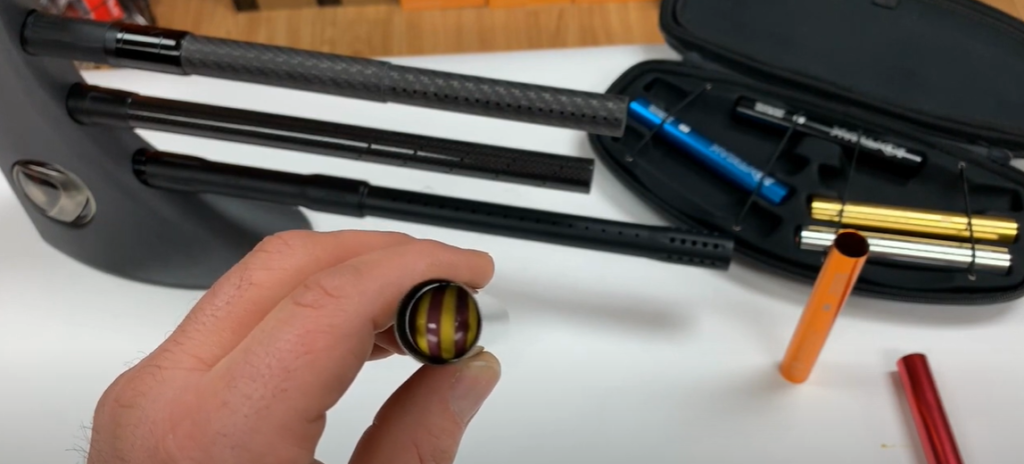
Size And Caliber
Paintballs come in a variety of sizes and calibers. The size of the paintball is measured in millimeters (mm), with the most popular sizes being .68 caliber, which is equivalent to 68mm, and .50 caliber, which is equivalent to 50mm. Generally speaking, larger paintballs are used for more powerful markers that generate higher velocities and can accommodate larger projectiles. Smaller paintballs are often used for low-velocity markers or those designed for lower impact games.
The type of paintball you use will also affect the distance it can travel before breaking on impact. Larger paintballs will typically fly farther than smaller ones because they have more mass and momentum behind them when fired from a marker. On the other hand, smaller paintballs fly faster due to their lower mass and can be more accurate at close-range targets.
.68 Caliber Paintballs
When it comes to paintball sizes, the most common one is the .68 caliber paintball. This size has been around for a long time and is still widely used today. It’s also the most commonly accepted size for competitive play.
These rounds have enough power to travel up to 300 feet per second, making them ideal for long-range shooting. It’s important to note that these paintballs are heavier than other sizes and can hurt more if you get hit. That’s why wearing the proper protective gear is essential when playing with .68 caliber paintballs.
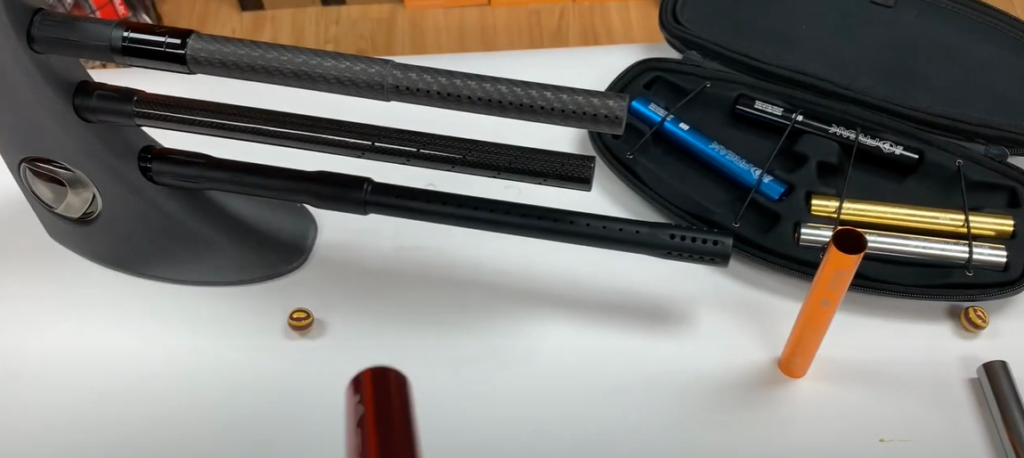
.50 Caliber Paintballs
When it comes to paintball sizes, .50 caliber paintballs are the most common. This is because they’re more reliable and accurate than smaller sizes; they produce a tighter shot pattern and better accuracy overall. Additionally, .50 caliber paintballs don’t break as easily as smaller sizes, so you won’t need to worry about chunks of paint flying off when you shoot at your target. However, one downside of using .50 caliber paintballs is that they have a slightly higher price tag than other sizes.
For those who like to play in an outdoor environment or just want some larger targets for practice, there are also .68 and .43 caliber paintballs available on the market. These are larger than their .50 caliber counterparts, and they are more visible when shot from a distance. They also tend to be less prone to breakage than smaller sizes, so you can have a better time playing with fewer paint-related messes. However, keep in mind that these larger sizes do require higher powered guns for an accurate shot. [1]
Other Sizes
Although the majority of paintballs used in recreational activities are 0.68 caliber, there are some variations in sizes and colors that can be used for different purposes. Paintball manufacturers generally make paintballs in the range of .50 to .72 caliber, depending on their intended purpose and which gun they will be shot from. Smaller paintballs (.50) are typically used in low-end recreational markers while larger paintballs (.72) are usually reserved for more powerful and expensive markers designed for tournaments or professional use.
The smaller paintballs tend to break easier than the larger ones due to increased pressure created by more powerful guns, so it is important to use the right size and type of paintball for each type of gun. In addition to size, the color of a paintball can range from bright and vibrant colors like pink or yellow to duller shades like gray or black. Different colored paintballs are sometimes used in different types of scenarios or games to help differentiate players on opposite teams.
Overall, while all recreational paintballs tend to be around the same size, there is enough variation in sizes and colors that certain types may be better suited for specific applications than others. It is important to use the right type of ball for your gun and chosen game type in order to maximize accuracy and performance.
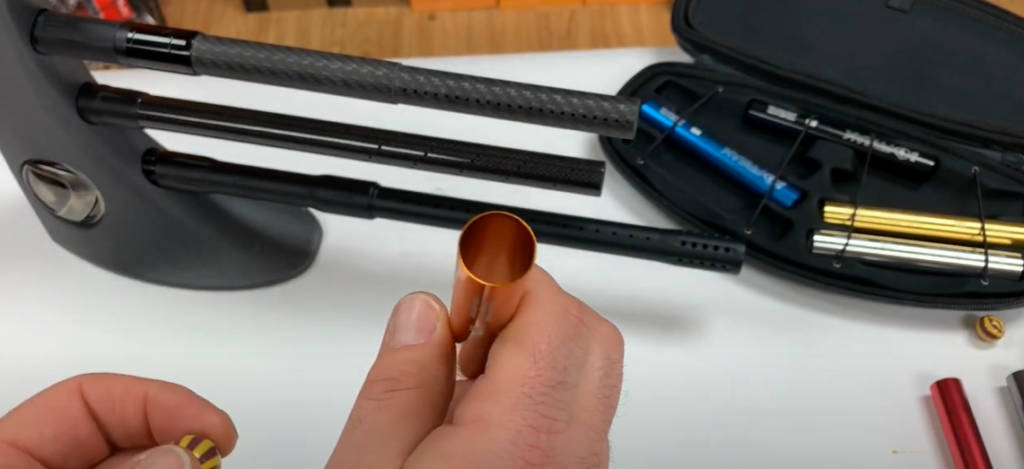
Choosing the Right Paintball Caliber for You
When it comes to paintball, one of the most important things to consider is the size of the paintballs you’ll be using. Before deciding which type of paintball you want to use, you need to make sure that your marker can handle the size of the paintballs that are being used.
The two most common sizes for paintballs are .68 caliber and .50 caliber. .68 caliber is considered the standard size and is what many players use because it provides a good balance between accuracy and range while also allowing for easy cleaning. On the other hand, .50 caliber may have better accuracy at shorter distances due to its smaller size but can cause more breakage than larger sizes.
The right type of paintball for you will depend on what type of game you’ll be playing, the distance you need to shoot from, and the accuracy you need. If you’re playing woodsball or scenario games, then .68 caliber is probably your best bet. If you’re looking for more accuracy at shorter distances, then .50 caliber might provide better results. [2]
No matter which type of paintball size you choose, all that matters is that it works for your skill level and the type of game being played. Remember to always check with a professional before purchasing paintballs so that you can make sure they are compatible with your marker and provide the best experience possible!
Do All Paintballs Fit All Guns?
No, not all paintballs fit all guns. The size and shape of the paintball need to match the type of gun you’re using in order for it to be fired properly. Paintballs come in different sizes, ranging from .50 caliber up to .68 caliber. Most markers support a specific size of paintball, so make sure you know what size your gun is made to use before buying any paintballs.
In addition, different types of paintballs can have different effects on accuracy and distance when they are shot out of a gun. So if you want to get the best results for your setup, make sure you pick the right kind and size that works with your gun. Also keep in mind that if you use paintballs that are too small or too large for your gun, they may not shoot accurately and could jam the gun. So make sure to always check before buying!
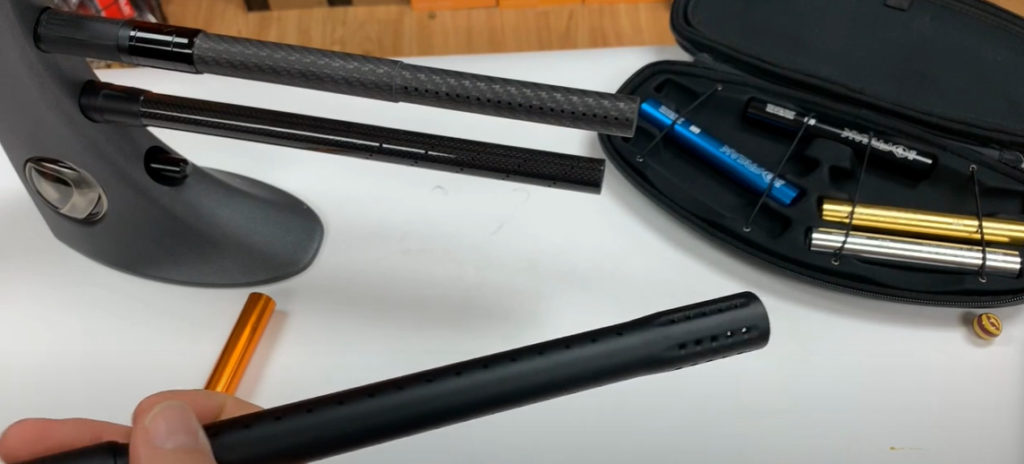
What Is the Most Common Caliber of Paintball?
The most common caliber of paintball is the 0.68-inch caliber or “paintball marker”. This size was standardized in 1989 and has been used ever since because it offers the perfect balance between accuracy, range, and safety. Modern paintball guns are designed to fire this size of paintball as accurately as possible. [3]
In addition to 0.68-caliber markers, some manufacturers also offer larger sizes such as 0.72-inch or 0.74-inch calipers that provide a higher level of accuracy but can cause more bruising if they hit you directly. It is important to consider what type of play you will be engaging in before selecting a gun, as different sizes work better for different types of activities.
Paintballs come in many different shapes and sizes. While some are round, others can be shaped like shells or boomerangs to make them more aerodynamic. The shape of the paintball affects how quickly it travels through the air and how accurate it is. It is important to choose a size and shape that best suits your style of play.
How to Buy the Right-Sized Paintballs
When it comes to buying paintball ammunition, size is an important factor. You want to make sure that you purchase the right size for your gun and game type. Here are some tips on how to buy the right-sized paintballs:
- Determine what type of paintball gun you have. Paintball guns come in a variety of sizes and styles, so it’s important to know which one you have before purchasing ammunition. If you don’t know what kind of gun you have, take a look at the manufacturer’s website or ask an expert at your local paintball store.
- Make sure the paintballs are compatible with your gun by checking the diameter measurement (usually measured in millimeters). Different guns are designed for different size ammunition, so it’s important to make sure that you get the right ones.
- Consider what type of game you’re playing when purchasing paintballs. If you know you’ll be playing a speedball or tournament-style game, it’s best to buy smaller and lighter paintballs that can travel faster with less effort from your gun. For woodsball or scenario games, heavier paintballs can be used since they will fall more quickly and have a greater impact on the target.
- Invest in high-quality paintballs for a better experience. Cheap paintballs may seem like a bargain at first, but oftentimes their poor quality doesn’t make them worth the money in the long run. High-quality paintballs are made with better materials and tend to be more reliable, which is important if you want to get the most out of your game.
By taking these factors into consideration, you’ll be able to ensure that you purchase the right size and quality of paintball ammunition for your needs.
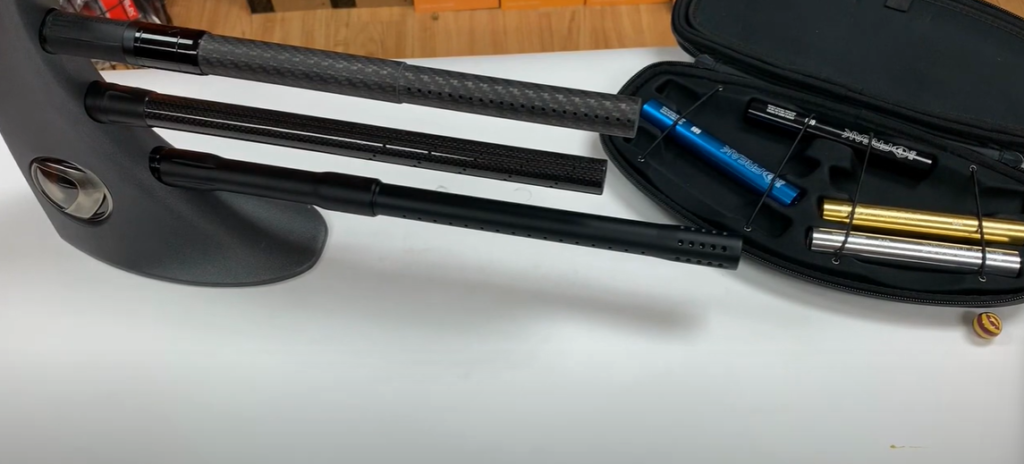
Additional tips
Though paintballs come in different sizes, it’s important to remember that they all tend to be quite fragile. You should always handle them carefully and with the utmost respect. If you drop a paintball on a hard surface, it could easily break open and cause a mess. Therefore, it’s never recommended to drop or throw your paintballs around.
Another thing to consider is the type of gun you’re using when shooting your paintballs. Paintballs that are too small for the barrel of your gun can get stuck inside and potentially damage the inside of the barrel. Make sure that you match up your barrel size with the correct size of paintball before firing away!
Finally, if you’re playing competitively, it’s important to know the rules of the game so that you don’t break any regulations by using paintballs that are too big or too small. Make sure to do your research and thoroughly read through all rules and regulations before playing a competitive match.
Now that you’ve got the low down on size variations in paintballs, it’s time to get out there and have some fun! Get ready to make some memories with friends as you play with different sized paintballs! Just remember to always handle them with care.
FAQ
Are paintballs one size fits all?
No, paintballs come in different sizes. The standard size for a paintball is .68 caliber, but there are other sizes available like .50 caliber and .43 caliber. It’s important to choose the right size for your marker (paintball gun). If you use the wrong size of paintball, it might not fire properly or cause damage to your gun. Also, some fields may require specific sizes of paintballs to be used on their playing field, so make sure to check ahead of time. [4]
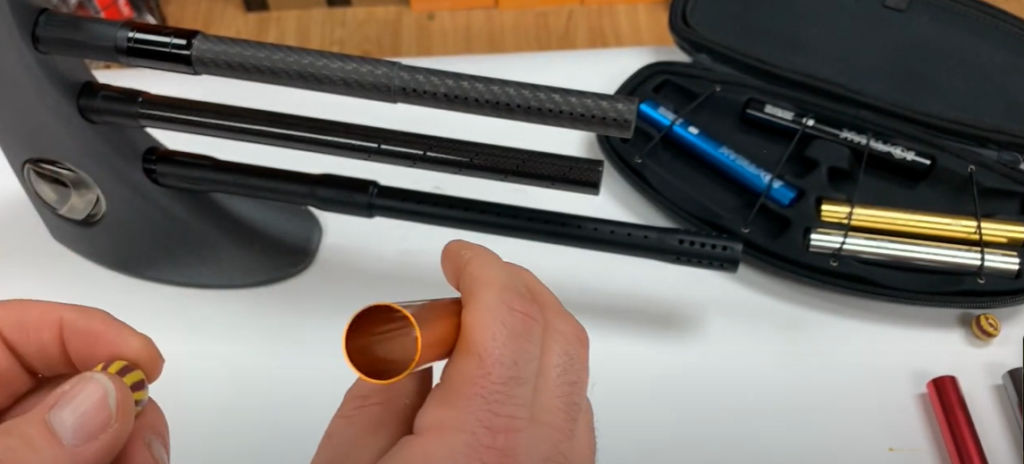
What are the different size paintballs?
Paintballs come in a variety of different sizes, ranging from small .68 caliber to larger .50 caliber. The most popular paintball size is the .68 caliber, as it works well with all types of marker guns and provides a consistent trajectory when fired.
The smaller .43 size paintballs are designed for use with shotguns or multiple shot markers, while the larger .50 caliber paintballs can pack more paint into each ball and provide a better range when shot. However, due to their size they tend to break on impact more easily than their smaller counterparts.
For tournament play or recreational use, it’s important to know what type of paintball size you need before purchasing your supplies. If you’re looking for a large amount of paintballs, it might be best to purchase the larger .50 caliber size. If you’re looking for a smaller quantity and don’t need as much distance, then opting for the .68 caliber size would be ideal.
No matter which size of paintball you choose, always make sure that your markers are designed to accept that type of ball. Additionally, when shooting in an area with trees or other obstacles, keep in mind that the larger balls may not be able to penetrate these objects as smaller balls can.
Ultimately, paintballs come in different sizes to suit different needs and preferences. Remember to do your research beforehand so you know exactly what kind of paintballs will work best for your style of play.
Does paintball size matter?
When it comes to paintball size, it can make a big difference in the game. Different sizes of paintballs affect how far they will fly and how accurate your shots will be when you shoot them. There are several factors that contribute to this including barrel size, weight, shell type, and fill material.
Smaller paintballs have less surface area, resulting in less friction with the air which increases accuracy and distance traveled by the paintball. They also travel faster than larger paintballs due to their decreased mass. However, smaller paintballs tend to break easier on impact so they may not be suitable for more intense gameplay scenarios such as woodsball or scenario games where players are aiming at targets farther away from them.
What are the 2 types of paintballs?
Most paintballs are either .68 caliber or .50 caliber. The .68 caliber paintballs are the most common and widely used type of paintball in recreational play, and can be found in most local stores that sell paintball accessories. They provide a larger target area on opponents with less chance of breakage than smaller sizes. [5]
The .50 caliber size is more commonly used in competition play, as they offer a higher accuracy rate because they are smaller and lighter than the .68 sized balls. This size is also generally more expensive than the larger-sized ones due to their higher degree of precision and accuracy. It’s important to note that not all tournament fields require this size; some may allow players to use either size depending on the rules and regulations of the particular field.
Finally, there are specialty paintballs that come in even smaller sizes, such as .43 caliber, for use in woodsball/scenario play. These smaller-sized balls tend to be more expensive than regular paintballs and less common due to their specialized nature.
What paintballs hurt less?
The size of the paintball will affect how much it hurts when it hits you. Generally, larger paintballs tend to hurt more because they have a bigger surface area and so create more impact. Smaller paintballs can still be just as accurate and effective, but they don’t hurt as much. The thickness of the shell also affects how much it hurts – thin shells are generally less painful than thicker ones. For example, First Strike rounds have a thin shell that makes them particularly gentle on players, while traditional paintballs usually have a thicker shell that leads to more pain when hit.
So if you want to reduce the impact felt by being hit with a paintball, then smaller-sized balls with thinner shells are the way to go. However, it’s important to keep in mind that smaller paintballs will reduce accuracy and range significantly, so they’re not suitable for every type of game or situation. It’s a good idea to experiment with different sizes and shells to see which you prefer.
Useful Video: How to Choose a Barrel Back or Barrel Insert | Lone Wolf Paintball Michigan
Conclusion
Whether you’re a beginner or an experienced paintballer, it’s important to understand the differences between paintball sizes and shapes. Paintballs that are too large can cause damage to your gun, while paintballs that are too small can be difficult to shoot accurately. Fortunately, most manufacturers offer a variety of different size paintballs so that you can find one that best fits your style of play. If in doubt, read the instructions provided with your equipment and inquire about the size of each type of paintballs before purchasing them. That way, you’ll be sure to have the right kind of ammunition for every round!
When shopping for paintballs, also make sure they are stored properly and check the expiration date on any packages you purchase. Lastly, wear the proper protective gear to minimize any risk of injury and have fun! With all these tips in mind, you’ll be ready for your next paintball battle. Good luck!
References:
- https://www.liveabout.com/caliber-of-paintballs-2565932
- https://hobbystrategy.com/how-to-choose-right-paintballs/
- https://hobbystrategy.com/paintball-calibers-and-type/
- https://hobbystrategy.com/do-all-paintballs-fit-all-guns/
- https://cypresspaintball.com/types-of-paintballs-and-calibers/


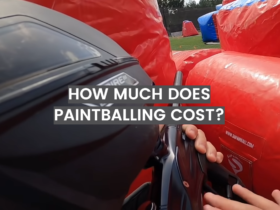
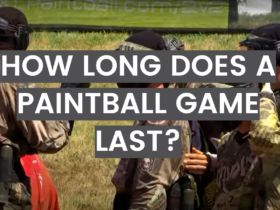
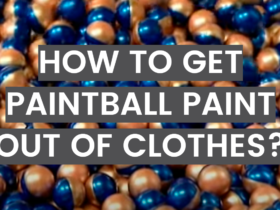
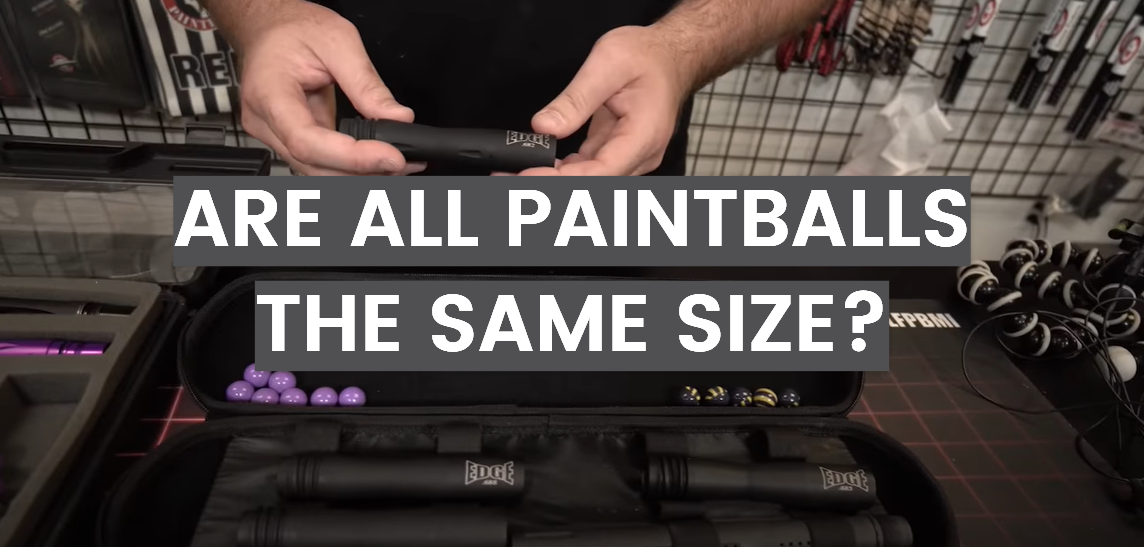
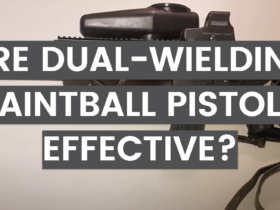
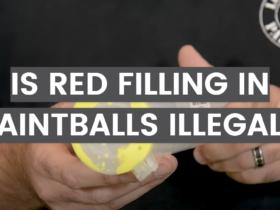
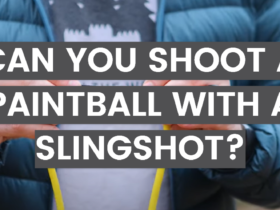
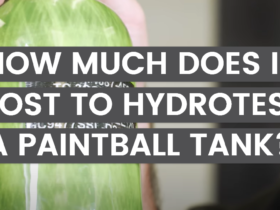
Leave a Review